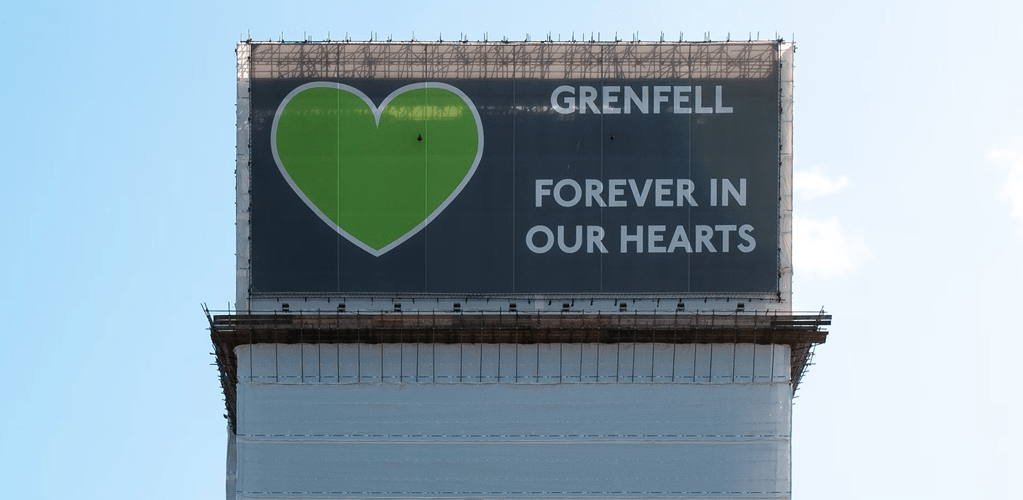Grenfell victims were ‘overcome by toxic gases’ – this is the deadly construction loophole that helped cause their deaths
The Grenfell Tower fire inquiry reveals that combustible insulation and cladding circumvented fire safety measures, causing toxic smoke inhalation deaths. Stronger regulations on smoke toxicity in construction materials are urgently needed.

TL;DR | Highlights from this story
● The Grenfell Tower fire revealed failures in fire safety, where combustible materials enabled the deadly spread.
● “Compartmentation” and “stay put” policies, designed to prevent fire spread in high-rises, were undermined.
● PIR foam insulation released highly toxic gases during combustion, contributing to many fatalities at Grenfell.
G overnments have a duty to protect their citizens. While they won’t go as far as telling us what we can and cannot put in our homes, we do expect them to ensure that the buildings we live in are safe from fire.
The final report of the Grenfell Tower inquiry confirms that this was not the case in 2017 when 72 people lost their lives to a fire that engulfed their home in west London.
There is a general principle that residents of high-rise buildings should be as safe as those living in typical two-storey houses. This is achieved using what is known as “compartmentation” – a strategy of using fire-resistant construction to ensure that a fire in one flat cannot spread to neighbouring flats.
This strategy worked for decades, in combination with the “stay put” policy for fire and rescue in high-rise buildings, which told people to remain in their home if theirs was not directly affected by fire.
By the 2000s, understandable demands to reduce carbon emissions fuelled greater requirements to insulate buildings. In 2006, the government permitted the use of combustible insulation foams on high-rise buildings. It was a cheap way to save energy.
But the presence of combustible insulation and cladding panels on the outside of buildings completely circumvents compartmentation. It allows fire to spread from flat to flat around the outside of a building. As fire spreads up and across the walls, it successively ignites the contents of individual flats while filling each flat with toxic smoke.
Inhalation of toxic smoke is one of the primary causes of fire-related deaths. In his introductory statement to the final publication of the Grenfell Tower inquiry report, chairman Martin Moore-Bick said that “all those who died in the building were overcome by toxic gases”.
When certain types of plastics burn, they release hydrogen cyanide as well as carbon monoxide. As the fire grows, it becomes limited by the air supply, and the amount of both toxicants increases by a factor of ten to 50. Some flame retardants, added to the product in order to pass the regulatory test, slow ignition but result in much more toxic, thicker, blacker smoke, even when there is plenty of air. When these products burn without enough air, the toxicity is even greater.
PIR (polyisocyanurate) is based on polyurethane, and gives off hydrogen cyanide and carbon monoxide when burning. PIR foam insulation, containing flame retardants, was used on Grenfell Tower. Its smoke is highly toxic, containing large quantities of hydrogen cyanide and carbon monoxide. At low concentrations, hydrogen cyanide causes rapid loss of consciousness, preventing escape but leaving the victim inhaling more toxic smoke.
Carbon monoxide has no smell, and hydrogen cyanide has a slight, sweet smell. The unpleasant, acrid components of the thick black smoke reported by those escaping are actually less harmful than the undetectable hydrogen cyanide and carbon monoxide.

— Front page, 5-Sept-2024.
Toxicity reporting
Prior to the Grenfell tragedy, the architects and specifiers for new tall buildings and those being refurbished had to choose between non-combustible insulation (products such as glass wool and stone wool) or two types of combustible insulation – phenolic foam or PIR foam.
Had they chosen non-combustible insulation for Grenfell, the fire would not have taken hold. Had they chosen phenolic foam, with similar flammability but around a fifth of the smoke toxicity of PIR, fewer people would have been trapped and lost consciousness, but the fire would have spread in a similar way.
Unfortunately, although manufacturers have to provide information on the fire behaviour of construction products, there is no requirement to quantify the toxicity of the smoke. There is also little publicly available information for architects and specifiers to inform their decisions about which materials to use and how toxic each might be.
For example, if the team refurbishing Grenfell Tower had access to information that the smoke from PIR was five times more toxic than from phenolic foam, but the price and performance in other respects was comparable, would they still have chosen the PIR?
Some progress has already been made towards averting a further disaster. Since January 2019, combustible materials have been banned from the external walls of tall, residential buildings. However, thousands of buildings with combustible facades that would not be allowed today are still standing across the country.
In 2020, the previous government announced a four-year, £600,000 research project to investigate the feasibility of regulating smoke toxicity for construction products. I am a member of the steering committee for that project, which followed my own research on this topic. It is due for completion in September 2024.
The conclusions of the Grenfell Tower inquiry are now part of longer standing statistics that show that the inhalation of toxic gases is one of the primary causes of fire-related deaths. This demonstrates a very clear need to quantify smoke toxicity, and to set regulatory limits on the smoke toxicity of construction products used in high-risk applications, like tall buildings. The conclusions of that research project are therefore eagerly awaited.

GOING FURTHER
Sources:
▪ This piece was originally published in The Conversation and re-published in PUBLIC SQUARE UK on 7 September 2024. | The author writes in a personal capacity.
▪ Cover: Unsplash/the blowup. (Licensed under a Creative Commons Attribution-ShareAlike 4.0 International License.)







[Read our Comments Guidelines]